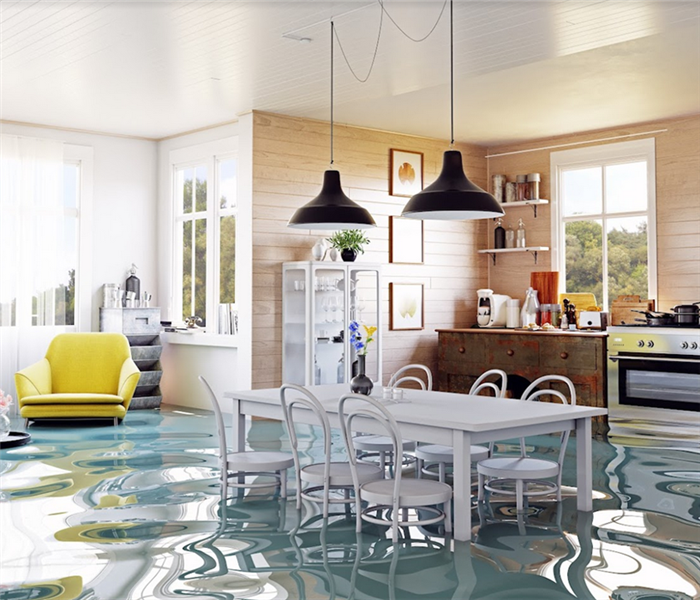Flood Damage in Your Monroe Home
7/10/2022 (Permalink)
 When flooding affects your home from an external source, team SERVPRO can help with effective water removal. We have the equipment and staff to help.
When flooding affects your home from an external source, team SERVPRO can help with effective water removal. We have the equipment and staff to help.
Cleaning after Flood Damage in Your Monroe Home
Living near the Ouachita River, residents of Monroe, Louisiana, are no strangers to flooding. Sea level, high river water, and storms can team up together and leave your home with a flooded mess. As the waters recede, they often leave behind sludge and debris that need to be addressed right away.
Taking care of flood damage in Monroe is no easy task and should be taken seriously to mitigate any further damage, such as dangerous mold infestations or rotted out walls. Due to contaminants found on the ground, flood water is black (category 3) water. Typically, occupants need to leave during the contaminant removal process to protect themselves from dangerous bacteria. SERVPRO restoration specialists wear the appropriate personal protective gear like face respirators, including HEPA particulate/organic filters, full-body suits, waterproof boots, and nitrile gloves when exposed to black water. This PPE personal protective equipment is donned according to the contamination level and environment.
The SERVPRO crew chief or project manager helps to establish building containment involving sealing off doorways or openings with 6-mil polyethylene plastic and tension poles. Outside of this containment area, there is typically a decontamination chamber created where workers exit and remove debris. The HVAC system does not run in the contaminated area since the air system could spread particles throughout the home. However, an air filtration device blows clean air into the affected area from outside the building, but the contaminated air cannot go into the unaffected area. This is known as negative pressure.
Technicians remove solid waste, debris, and silt from the affected area, sometimes using shovels or rakes. If there are more than 2 inches of standing water, technicians use a submersible pump to remove it from the home. Typically, however, flood water recedes, and portable extraction devices remove the excess water from the flooring and other materials within the home. It is essential to understand your local and state regulations regarding the disposal of contaminated water. If using a portable extractor, wastewater is often flushed down the toilet, requiring disinfection later.
SERVPRO restorers sometimes make flood cuts several inches above the damage in the drywall. This is to ensure the removal of contaminants and allows the wall cavities to dry appropriately. Dehumidifiers and high-velocity air movers assist in drying the affected areas after cleaning. They may also be used to keep the relative humidity (RH) down in unaffected areas to limit secondary damage.
For 24/7 assistance, contact SERVPRO of Monroe / West Monroe at (318) 345-5121.






 24/7 Emergency Service
24/7 Emergency Service